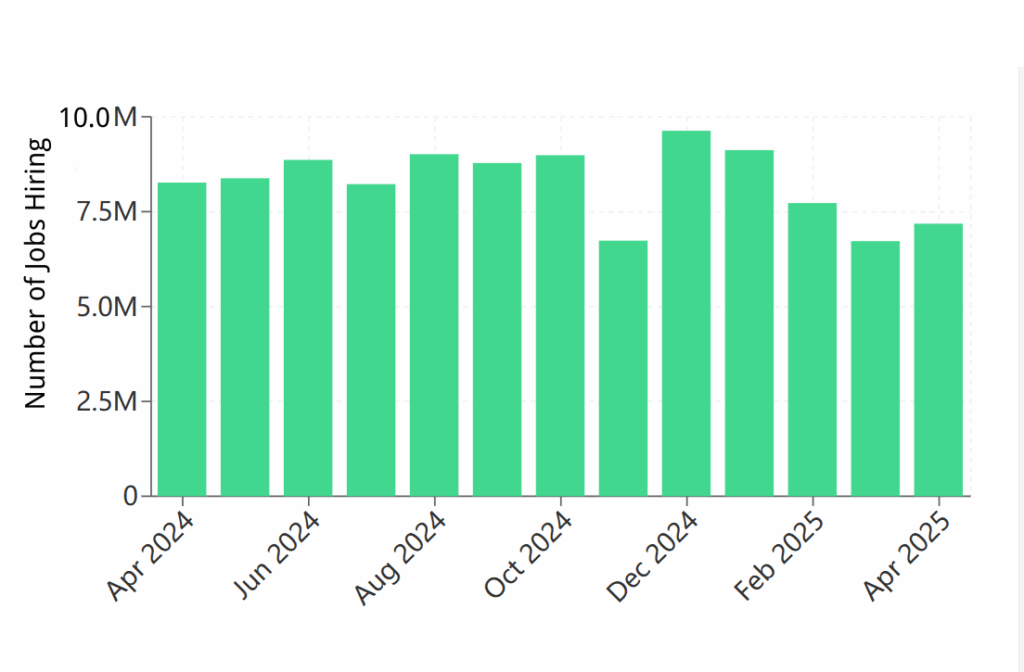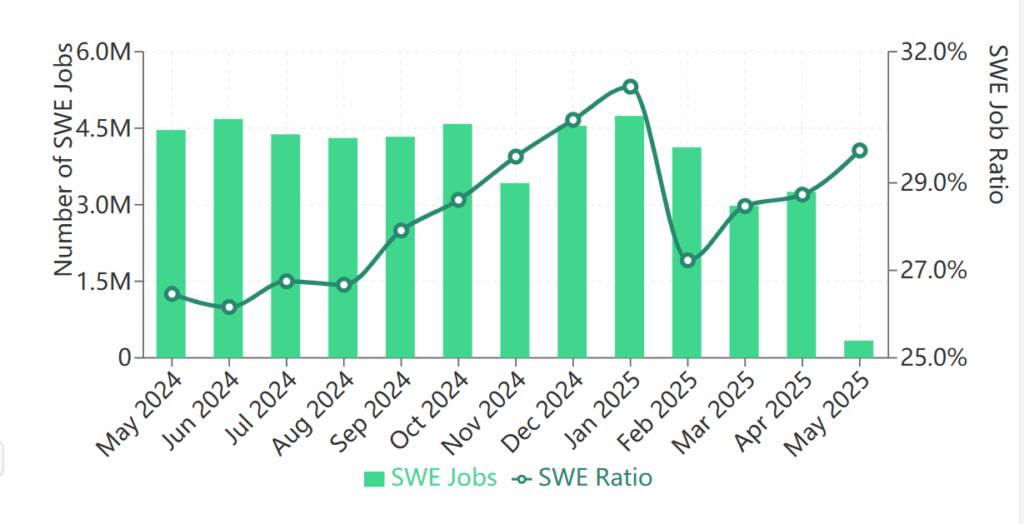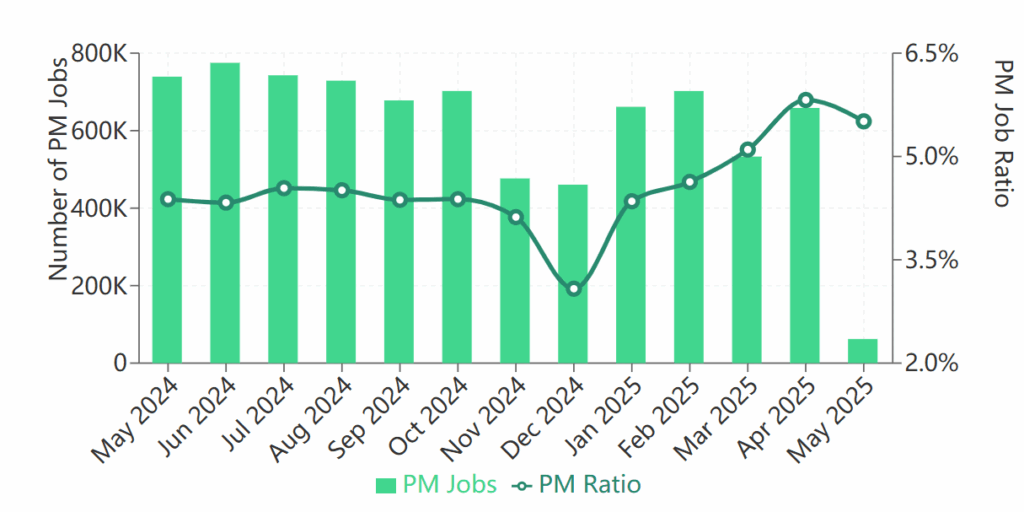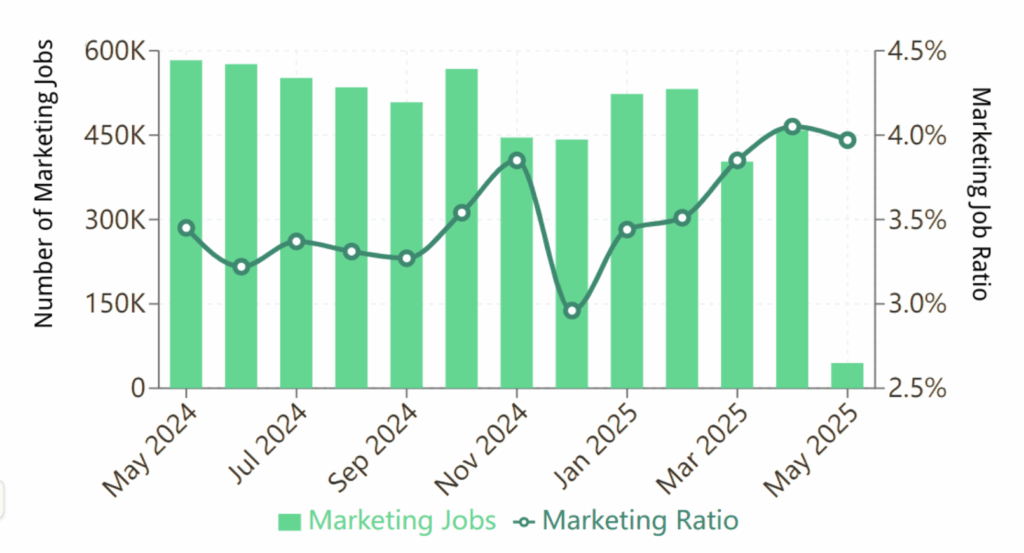Insights from the Latest Hiring Trend Data: What’s the Best Time to Job Hunt?
Knowing when to job hunt can be as important as knowing where or how. The number of job openings isn’t static. They rise and fall with seasons, budgets, and economic cycles, and Jobright’s data captures those waves.
For job seekers, timing your search around those waves can be the difference between landing an interview and getting lost in the noise.
In this article, you’ll see both the big picture and role‑specific insights for software engineers, product managers, and marketers, backed by 13 months of Jobright data. Whether you’re actively looking or planning ahead, this guide will help you job hunt more effectively. Let’s begin!
The Hiring Heatmap: When Are Jobs Booming?

As you can see, the total number of job openings fluctuates throughout the year. The standout peak is December 2024, with 9.63 million job openings, making it the most active hiring month in this 13-month window.
These three follow along in top months for total job openings:
- August 2024: 9,013,665 openings
- January 2025: 9,122,554 openings
- October 2024: 8,987,286 openings
These peaks align with predictable business cycles. In December, companies rush to fill roles before the year ends or budgets reset. January sees another spike, as hiring teams kick off fresh initiatives post-holidays for the new year.
What about months with lowest hiring activity? That’s March 2025 (6.72 million) and November 2024 (6.73 million). These dips may be due to end-of-quarter slowdowns or transitional planning before major hiring pushes.
We’ll talk more about how to use this data strategically in a later section.
Looking at Hiring Trend Data for Top Jobs
Now let’s zoom in on three in-demand fields: software engineering, product management, and marketing.
Software Engineers

Out of the three categories we’re going to discuss, SWE is the most consistent.
The total number of SWE jobs was highest in January 2025 with 4.74 million listings, followed closely by June 2024 (4.67 million) and May 2024 (4.46 million). The only notable dips are in March 2025 (2.97 million) and April 2025 (3.25 million).
That said, with more than 4 million postings almost every month, SWE is generally strong.
Product Managers

Now, let’s talk about product management. June 2024 leads with 774,995 PM openings, followed by May (739,232) and July (742,841).
Diverging from the overall trend, December 2024 marks a sharp drop for product managers—just 460,582 jobs. We will talk more about what you should do during hiring lulls later in the article.
Marketing

Marketing roles showed relatively stable numbers through 2024 but began to dip in the last quarter. The highest number of openings came in May 2024 (582,933), followed by June (576,013) and October (567,473). The lowest being March 2025 and December 2024 (441,876).
It isn’t necessary that peaks are good and dips are bad. You can use the trend to benefit yourself if you are strategic with it. Here’s how to turn those peaks and dips to your advantage.
How to Use the Peaks and Dips in Hiring Trends Strategically as a Job Seeker
Hiring trends aren’t just interesting to look at, they’re actionable. So, what do they mean for you as a job seeker?
On first look, it’s easy to think that the only time to apply is when there are the most job postings, i.e. December and January. But that limits your options. There are upsides to applying during quieter months as well.
There’s less competition, so your application will have more visibility. Even if you don’t get hired then, you’ll at least be on the radar of hiring managers, especially if you reach out to them personally. That “early bird” status can translate into interviews when hiring ramps back up.
Of course, it also depends on your niche. For software engineers, January and June shine; for product managers, early summer and spring offer great odds; and for marketing professionals, late spring and early fall are optimal.
If there’s a specific company you want to join, also research the internal cycles of that company. By understanding when that company ramps up or slows down recruitment, you can time your application and give yourself a strategic edge.
Overall, peaks like December/January are great for applying broadly, while dips like March/November are optimal for targeted, high-value outreach. Learn to understand the flow of the market and take action accordingly.
Conclusion
So, there you have it: December and January have the most jobs, while March and November have the lowest. However, keep in mind, there’s no “good” or “bad” time to job hunt, it all depends on what you’re looking for and what strategy you’re using.
These trends might shift in the future based on various factors, so make sure to stay updated.
Whether you’re ready to hit “apply” today or planning your next big move, let the trends guide you.
